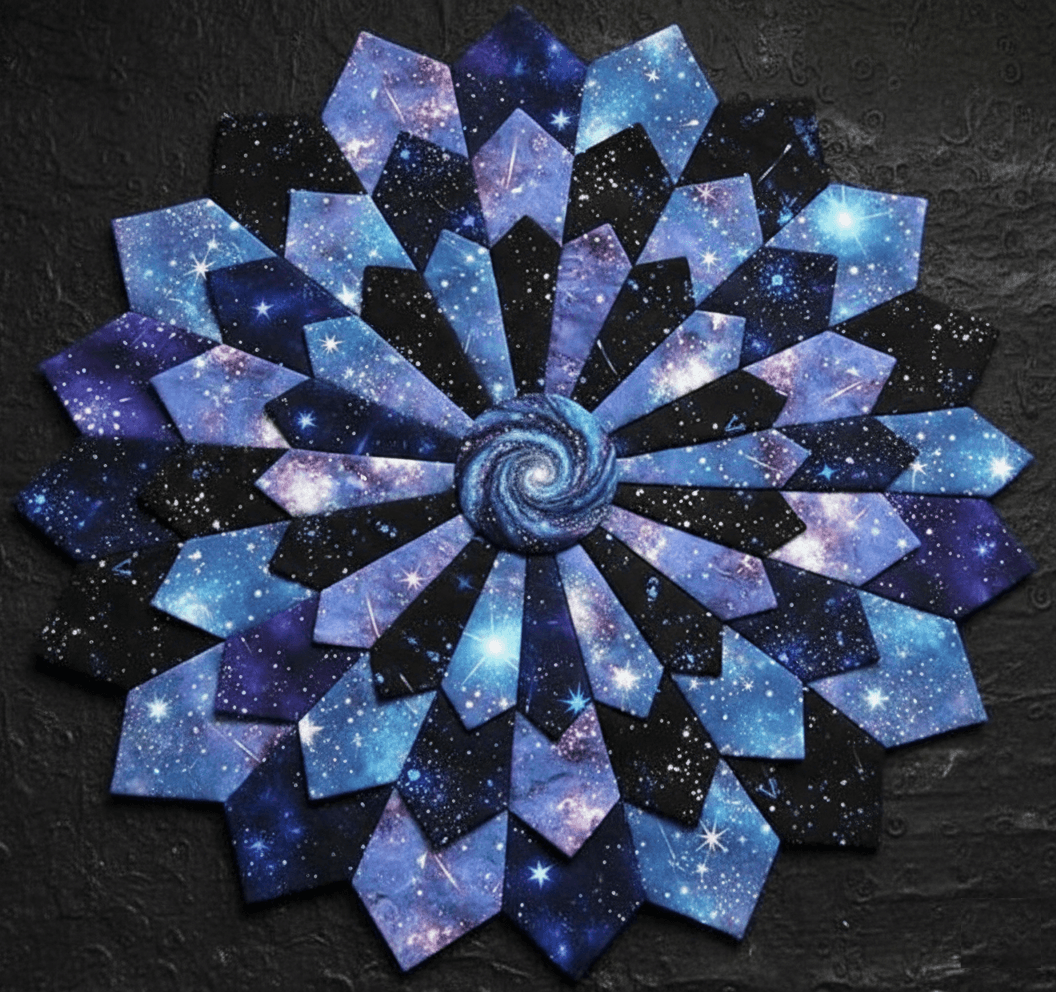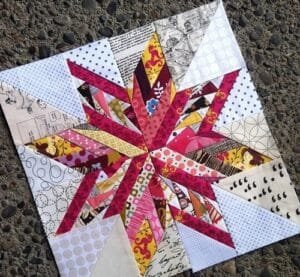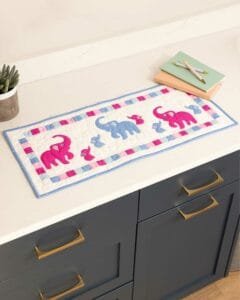The Dresden Plate Quilt Free Pattern is a classic design that has delighted quilters for generations. With its intricate circular motifs and vibrant fabric choices, the Dresden Plate pattern can transform any quilt into a stunning centerpiece.
Creating a Dresden Plate quilt is not only a craft but also an art form. This pattern involves careful cutting, precise sewing, and thoughtful arrangement of fabric pieces.
One of the reasons the Dresden Plate quilt remains popular is its ability to combine simplicity with elegance. Even though the design appears complex, it is achievable with patience and attention to detail.

Understanding the Dresden Plate Pattern
The Dresden Plate is a traditional quilt block pattern that consists of multiple fabric wedges arranged in a circular design. Each wedge, typically shaped like a petal, contributes to the overall radial symmetry of the pattern. The Dresden Plate is celebrated for its versatility, as quilters can choose different fabrics to create contrast or blend tones for a more subtle effect. This design can be used in various quilt sizes, from small table runners to large bed quilts, making it ideal for different projects.
The origin of the Dresden Plate dates back to the 1920s and 1930s in America. Quilters during this era were inspired by floral designs, which is reflected in the petal-like wedges. The pattern quickly became a favorite because it allowed for creative use of scraps, making it economical while still visually appealing. Understanding the history of the Dresden Plate adds a sense of tradition and appreciation to your quilting process, connecting modern quilters with decades of craftsmanship.
When choosing fabrics for the Dresden Plate quilt, consider both color and texture. Light and dark fabrics can create a striking contrast that emphasizes the circular design, while fabrics with small prints can enhance the visual complexity. The placement of each wedge is crucial; alternating colors or patterns can produce a dynamic and eye-catching effect. Following the Dresden Plate Quilt Free Pattern ensures that you maintain consistent wedge sizes and spacing, which is essential for achieving a polished look.
Creating the wedges involves precision in cutting and sewing. Each wedge should be identical to ensure a perfect circle when assembled. Quilters often use templates or rulers specifically designed for the Dresden Plate to simplify this process. Once the wedges are cut, they are sewn together and pressed to create crisp seams. Adding a circular center, which can be a solid fabric or a decorative piece, completes the classic Dresden Plate motif.
The Dresden Plate is not just a decorative pattern; it also offers practical applications. It can be incorporated into quilted table runners, wall hangings, pillow covers, and full-sized quilts. This adaptability makes it a favorite among quilters who enjoy exploring different projects. By mastering the Dresden Plate Quilt Free Pattern, you gain a valuable skill that can be applied to a wide range of quilting endeavors.
Finally, understanding the structure of the Dresden Plate helps in planning your quilt layout. Whether you aim for a traditional layout with a repeating pattern or a modern interpretation with varying sizes and placements, the Dresden Plate offers endless possibilities. Careful planning ensures that your finished quilt will have both balance and harmony, showcasing the beauty of this timeless design.
Materials and Tools for Your Dresden Plate Quilt
Before starting your Dresden Plate quilt, it is important to gather the right materials and tools. Essential items include high-quality quilting fabrics, thread, a rotary cutter, cutting mat, quilting ruler, pins, and sewing machine. Choosing fabrics with complementary colors or contrasting shades will make your Dresden Plate stand out and enhance the overall visual appeal. Using the correct tools ensures accuracy and efficiency throughout the quilting process.
Fabric selection is one of the most enjoyable parts of creating a Dresden Plate quilt. Traditional quilts often use a mix of prints and solids, while modern interpretations might include batiks or hand-dyed fabrics. The key is to maintain a balance between light and dark fabrics to create depth and visual interest. Following the Dresden Plate Quilt Free Pattern helps in determining how many wedges of each fabric type are needed for your project.
Cutting the wedges accurately is crucial. A rotary cutter and a ruler specifically designed for the Dresden Plate will save time and reduce errors. Each wedge must be uniform to ensure the circular pattern forms correctly. Using pins or clips to hold pieces in place before sewing helps maintain alignment and prevents shifting during stitching. Precision in this step is essential for achieving a professional finish.
When assembling the wedges, take care to sew with a consistent seam allowance. Pressing each seam carefully after sewing ensures that the wedges lie flat and align perfectly with one another. This step is important for both the aesthetic and structural integrity of your Dresden Plate quilt. A neatly pressed quilt block will make the final assembly process smoother and more enjoyable.
Adding a circular center completes the Dresden Plate motif. This can be a contrasting fabric, a button, or a decorative applique. The center acts as a focal point and ties the wedge pattern together. Securing the center with hand stitching or machine stitching ensures durability, especially if the quilt will be used regularly. Following these steps in the Dresden Plate Quilt Free Pattern guarantees a cohesive and polished look.
Finally, consider the backing and batting for your quilt. Choosing the right batting affects the quilt’s warmth, drape, and overall feel. Cotton batting is popular for its softness and ease of quilting, while polyester batting provides additional loft. The backing fabric should complement the top design and complete the overall aesthetic. Proper materials and careful assembly contribute to the long-lasting beauty of your Dresden Plate quilt.
Step-by-Step Guide to Making a Dresden Plate Quilt
Starting your Dresden Plate quilt project begins with careful planning. Determine the size of your quilt and the number of Dresden Plate blocks needed. Use the Dresden Plate Quilt Free Pattern to cut uniform wedges from your chosen fabrics. Laying out the wedges before sewing helps visualize the final design and allows adjustments for color balance and pattern flow.
Once your wedges are prepared, sew them together using a consistent seam allowance. Begin with two wedges and gradually add more, forming a circular pattern. Press seams as you go to ensure each wedge lies flat. Repeat this process for each Dresden Plate block until all blocks are complete. Accurate assembly at this stage is key to a professional-looking quilt.
Next, attach the circular centers to each Dresden Plate block. Centers can be sewn by hand or machine, depending on your preference. Ensure that the centers are securely fastened, as they provide structural support to the blocks. The Dresden Plate Quilt Free Pattern often includes instructions for optional decorative centers that add flair to your quilt.
After completing the individual blocks, arrange them on your design wall or flat surface to finalize the quilt layout. Consider spacing, orientation, and color distribution to achieve a harmonious design. Once satisfied, sew the blocks together row by row. Take care to align seams accurately to maintain the circular patterns of each Dresden Plate block.
Adding borders enhances the overall look of your quilt. Borders can be simple or intricate, depending on your style. Choose fabrics that complement the Dresden Plate design and sew them carefully to the quilt edges. Press all seams and ensure corners are neat to achieve a polished finish.
Finally, quilt your Dresden Plate project using your preferred technique. Hand quilting, machine quilting, or long-arm quilting are all suitable options. Bind the edges to complete the quilt. Following the Dresden Plate Quilt Free Pattern ensures that each step is executed correctly, resulting in a beautiful and lasting quilt.
Tips and Tricks for Perfect Dresden Plate Quilts
To achieve a flawless Dresden Plate quilt, precision and patience are essential. Use accurate templates and rotary cutting tools to ensure consistent wedge sizes. Marking seam allowances and center points helps maintain alignment during sewing. These small steps make a significant difference in the final appearance of your quilt.
Experimenting with fabric combinations can elevate your Dresden Plate design. Mixing prints, solids, and textures adds depth and visual interest. Consider the overall balance of colors, ensuring that no area appears too heavy or too light. The Dresden Plate Quilt Free Pattern serves as a guide while still allowing creative freedom.
Pressing seams correctly is another important tip. Open seams toward the center of the circle to reduce bulk and maintain the circular shape. A well-pressed Dresden Plate block lays flat and aligns perfectly with other blocks. Using a hot iron and steam ensures crisp and professional results.
Hand applique can be used for attaching centers if you prefer a more traditional approach. This technique allows for decorative stitching and adds a personal touch to your quilt. Machine applique provides efficiency and durability, especially for larger projects. Choose the method that best suits your skill level and desired look.
Taking breaks during long quilting sessions prevents fatigue and helps maintain precision. Working on small sections at a time ensures attention to detail and reduces errors. Following the Dresden Plate Quilt Free Pattern methodically allows for a smoother and more enjoyable quilting experience.
Finally, always check your work before final assembly. Minor adjustments to wedge placement or seam alignment can significantly improve the overall design. Patience and careful review ensure that your Dresden Plate quilt will be a source of pride for years to come.
FAQ
Q: What is a Dresden Plate quilt?
A: A Dresden Plate quilt is a quilt featuring circular motifs made of wedge-shaped fabric pieces arranged in a radial pattern, often with a decorative center.
Q: Can beginners make a Dresden Plate quilt?
A: Yes, beginners can make a Dresden Plate quilt by following a detailed pattern, using templates for wedges, and practicing accurate sewing and pressing.
Q: What fabrics work best for Dresden Plate quilts?
A: Both cotton prints and solids work well. Light and dark fabrics create contrast, while small prints add texture. Batiks and hand-dyed fabrics can provide unique effects.
Q: How do I ensure the wedges are even?
A: Use a rotary cutter, ruler, or template designed for Dresden Plate wedges. Accurate cutting and consistent seam allowances are essential for even wedges.
Q: How can I add a center to my Dresden Plate quilt block?
A: Centers can be solid fabric circles, decorative appliques, or buttons. They can be sewn by hand or machine, depending on preference.
Q: Can Dresden Plate quilts be used for different projects?
A: Yes, they are versatile and can be used for wall hangings, table runners, pillow covers, and full-sized bed quilts.
Conclusion
In this article, we explored the Dresden Plate Quilt Free Pattern in depth, covering its history, materials, step-by-step creation, and practical tips for success.
By understanding the structure of the Dresden Plate, selecting the right fabrics, and following accurate sewing techniques, anyone can create a beautiful quilt.
This timeless pattern offers endless creative possibilities, allowing quilters to make projects ranging from small decorative pieces to large, stunning quilts.
We encourage you to try the Dresden Plate Quilt Free Pattern, share your progress, and leave your honest opinions and suggestions to help other quilters. Your feedback not only inspires but also strengthens the quilting community.



